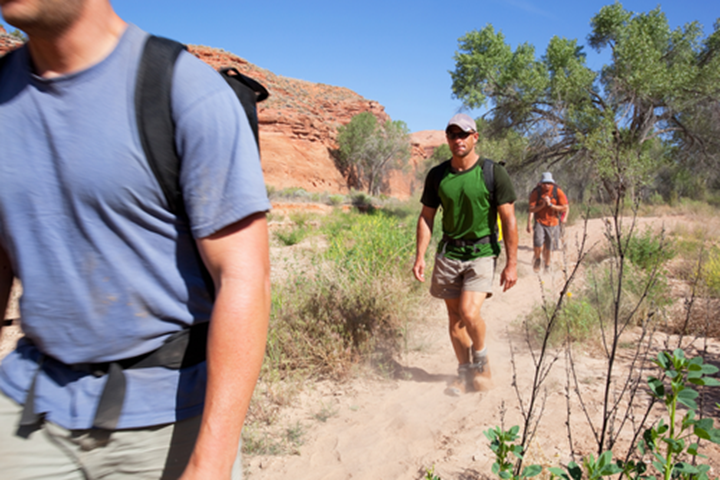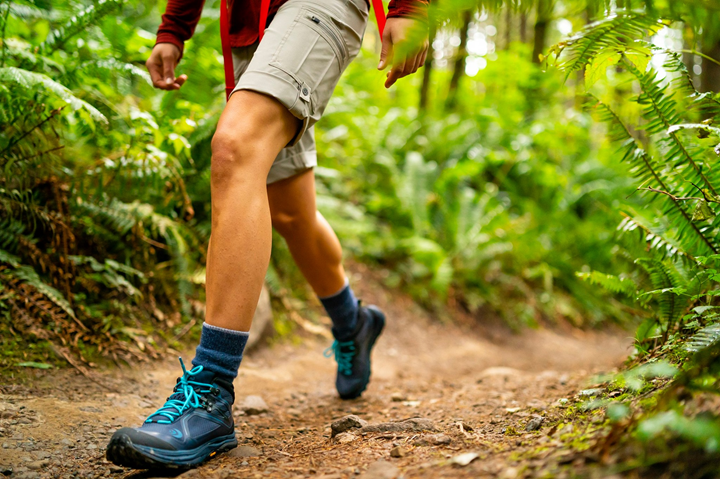Dressed for the Trail: A Complete Guide to Men’s Hiking Clothing and Footwear
A group of friends invited you to join them for a hike this weekend? Sounds like a great opportunity to spend some time outdoors. But do you know what to wear? Showing up in jeans, a cotton hoody, and running shoes might not be the best idea. That is if you don’t want to be soaked in sweat and nursing blisters for weeks. In the outdoors, your clothing is not just about looking good – it’s about wearing the right pieces that will protect you from the elements.
Why Proper Hiking Clothes Matter

A lot of things can change during a hike, the temperature, the terrain, then there is the distance and duration, etc. All of these variables can affect your body temperature and comfort. Proper hiking clothes for men are not only about feeling comfortable while conquering challenging trails. It helps you regulate your body temperature, protects you from the sun and elements, and can even save your life in extreme conditions.
The ‘Onion’ System: Dress in Layers
The smartest move when you dress for hiking is to use the layer system. Every experienced hiker or mountain climber knows the ‘onion’ layer principle can help you adapt to the changing weather. Think of your clothing as a sophisticated climate control system. Each layer has a specific job, and together they work to keep you comfortable and safe. Here’s what a well-put-together hiking wear men’s edition should include:
Base Layer
The base layer sits next to your skin, so it’s important to choose moisture-wicking materials like merino wool or synthetic fabrics (polyester, nylon). Depending on the weather, consider a short-sleeved tee (such as the ones incorporating thermoregulating and SpeedDri technology) that will keep you cool and dry. For cooler weather and protection from the sun, you might need a breathable long-sleeved shirt with ventilation panels, made from quick-drying fabrics.
Mid Layer
The mid-layer is your temperature regulator. Fleece jackets, lightweight down vests, or synthetic insulated jackets are your best bet here. They trap the warm air but allow the moisture to escape. If the temperature is higher, you can keep them in your backpack, but if when it drops or you stop for lunch, you’ll be glad you have something to warm you up.
Outer Layer
Your outer layer or shell is your shield against wind, rain, and snow. You need a waterproof but breathable jacket that will block rain and wind, but allow your skin to breathe without feeling like you are wearing a plastic bag. Make sure your rain jacket is made from a water-resistant material and has good ventilation (pit zips are a game-changer). It should also have a hood and adjustable cuffs so the rain doesn’t get other layers wet.
Pants: More Than Just Leg Covers
Hiking means a lot of walking, and sometimes over a rough terrain. This means you will have to make quite a few challenging leg moves. So, your men’s hiking clothing has to include hiking pants that are comfortable enough to allow freedom of movement, but also sturdy enough to withstand a rougher environment. Look for pants with stretch panels and reinforced knees and seats.
For the summer months, you can go with lightweight hiking shorts with built-in liners, but if the season is rainy, rain pants can save you from getting soaked. Again, opt for quick-drying fabrics that offer some stretch and features like multiple pockets to keep essentials.
Footwear: The Foundation of Every Hike

No hike would be enjoyable, or even last long if you are wearing the wrong shoes. What are the right shoes?
• Ones that fit you properly. Maybe try on a pair later in the day when your feet are a bit swollen.
• Matched to your terrain: sturdy, durable hiking shoes for rough terrains, lightweight trail runners or sandals for easy, day hikes on flat terrain.
• Waterproof or water-resistant shoes for wet conditions.
• Footwear with good support and traction on wet and dry surfaces.
And of course, don’t forget socks. Quality hiking socks can prevent blisters and keep your feet dry. Always have a spare pair – changing into dry socks halfway through a long hike is like putting on new feet.
Accessories
Hiking wear men’s edition is more than the apparel and footwear. A few accessories to protect your head and eyes are crucial. Have a beanie, hat, or balaclava to keep you warm and cosy in cold temperatures. Wide-brimmed hats or baseball caps are great for sunny days, just make sure you protect your neck and ears as well. Visors or sunglasses will shield your eyes from harmful UV rays and offer protection from wind and dust. A lot of hikers also carry hiking poles for safe and easier climbs.
Final Word: Invest in Your Adventure
The right hiking clothes for men are the ones that do the job and allow you to focus on what matters – the beauty of nature, the stunning views, the peaceful forests, and the conversations with your buddies. Choose quality apparel and footwear and next time you hit the trail you will be a well-prepared hiker.
